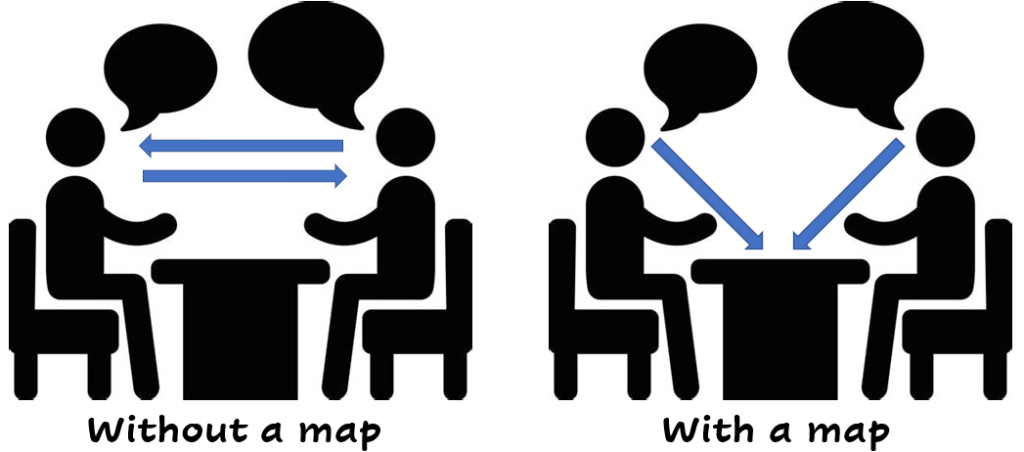Maps are useful, and they work well when you are trying to turn the conversation into a collaborative discussion to understand where you are and where you want to go.
There are many reasons because the map is useful, the main one is that the different ideas and convictions are compared not face to face, but on the map. This remove a lot of personal friction and hence have a positive outcome.

The map itself is just the step #2 of the strategy cycle: context. And that cycle have other stages. The one I want to talk today is #5 LEADERSHIP.

Leadership can be defined as the determination to act.
The determination to act has to be followed and the leader is the first one to commit on the idea s/he is promoting and resolving doubts about it. The promotion of the narrative is done to the team, to the leaders of this organization and/or the boards of directors of a company.
Your team can buy or not your idea, but a board of directors want to understand the personal commitment you have on your narrative:
- How committed are you to your idea?
- What is your personal exposure on the idea?
If the narrative is transmitted through a map, the board will see a good “paper of PowerPoint” and will miss of commitment. The map itself removes the exposure of the speaker and focus the attention on the map. And here the consequence is the opposite to the one you want.
If you have the determination to act, don’t you a map. Build your narrative around the map, but promote it in first hand, hear about the feedback and find solutions to the challenges the board is pointing to you.